The concept of Conservation and the environment is entirely based upon stopping the depletion or degradation of natural resources, such as land, water, plants, and animals. It is all about being responsible for the resources we are naturally blessed with. Conservation is the process of safeguarding and maintaining them. The air, water, soil, plants, and animals surrounding us are all considered part of our environment. We live with several species and share the same planet. Certainly, things influence all of us in ways of positivity and negativity.
The goal of Actions of conservation is to protect and preserve the environment for coming generations and present ones. Therefore, even though conservation is a component of environmental protection, the two ideas are related and share the objective of preserving the integrity and health of our world.
Furthermore, Conservation and the environment are also about ensuring the health and sustainability of ecosystems and the welfare of non-human and human life. It highly depends on conservation and environmental protection.
The main goals of environment protection are to maintain and top up biodiversity, safeguard natural ecosystems, and advance sustainable resource management techniques. Pollination, clean air and water, climate regulation, food security, and ecosystem services are all helped by conservation efforts. Furthermore, conservation is essential for reducing the negative effects of human activity, including pollution, habitat destruction, climate change, and overuse of natural resources.
It is important to understand that conservation is the accommodating attempt of local communities, governments, non-governmental organizations, and people to preserve the natural equilibrium and guarantee a robust and healthy environment for coming generations.
Preserving the health and sustainability of ecosystems, besides the welfare of the varied range of species on Earth, depends on conservation and environment protection.
The Significance of Conservation and the Environment
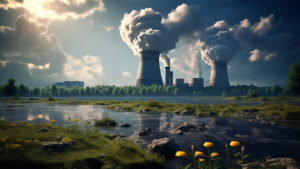
Conservation is important for some reasons such as;
Preserving Biodiversity: The great diversity of life on Earth, including plants, animals, and microorganisms, is protected and preserved in part by conservation efforts or environment services.
Preserving Ecosystem Services: Pollination, nutrient cycling, clean air and water, and climate regulation are just a few of the vital functions that healthy ecosystems offer. Ensuring the preservation of these ecosystem services is crucial for ensuring the welfare of humankind.
Sustaining Natural Resources: Actions of conservation encourage sustainable management of the resources including forests, fisheries, and water supplies to ensure the long-term availability of natural resources for future generations.
Protecting Habitats: The goal of conservation work is to maintain and improve natural habitats by controlling biodiversity losses that support a wide variety of species, including wetlands, forests, coral reefs, and grasslands.
Climate Change Moderation: By preserving forests and other ecosystems, carbon dioxide from the atmosphere can be removed, reducing the effects of climate change.
Conservation and the Environment: Important Principles
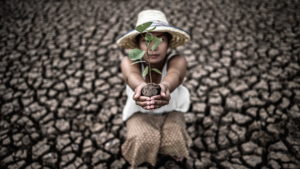
Conservation is informed by several fundamental ideas:
Precautionary Principle: Despite scientific uncertainty, precautionary measures should be used where there is a risk of significant or irreversible environmental damage.
Conservation of Biodiversity: The goal of conservation should be to safeguard and maintain the entire spectrum of biodiversity, preventing biodiversity losses and encompassing species variety, genetic diversity, and ecological diversity.
Sustainable Development: To meet human needs without risking the ability of future generations to meet their own, Actions of conservation should be incorporated into more general development objectives.
Community Involvement: Since local communities frequently possess important traditional knowledge and have a stake in the management of natural resources, they should take an active role in conservation efforts.
Collaboration and Partnerships: Governments, NGOs, local communities, corporations, and individuals must work together to effectively save the environment.
Actions of Conservation for Environment Protection
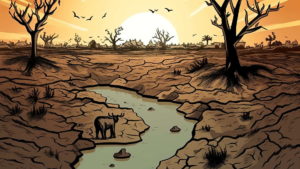
Numerous tactics and methods are used in Actions of conservation, such as:
Reforestation, wetland restoration, and coral reef rehabilitation are examples of habitat restoration techniques that return deteriorated environments to their original state.
To preserve important habitats and species protected areas such as national parks, animal reserves, and marine sanctuaries are established and managed.
Species conservation refers to the application of strategies such as captive breeding, habitat preservation, and reintroduction plans to save and recover threatened and endangered species.
Community-based Conservation is also important like using eco-tourism projects, sustainable resource management, and environmental education programs to involve local communities in conservation efforts.
Encouraging sustainable practices in fisheries, forestry, agriculture, and other resource-dependent businesses to lessen overexploitation and habitat loss is known as sustainable resource management.
Promoting environmental laws and policies that support the preservation of biodiversity, the preservation of habitats, the prohibition of the wildlife trade, and the implementation of mitigation strategies for climate change is another fundamental effort.
Why Is Environment Protection Dependent on Actions of Conservation?
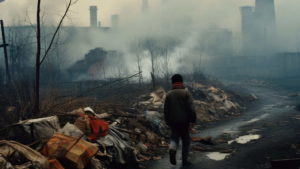
Every natural ecosystem is in a state of equilibrium. An ecosystem is the local community of living organisms and their interactions with the environment. All other components of the ecosystem are impacted when any one component is destroyed or removed.
- Impact on Habitats: Deforestation and other habitat damage have terrible consequences like biodiversity losses. It affects not just the species that live in that area but the entire world as well.
- Climate Change: By absorbing carbon dioxide (CO2) from the atmosphere and storing it in their wood, leaves, and soil, trees in forests contribute to the prevention of climate change. Global warming results from increased CO2 emissions into the atmosphere caused by forest fires and tree removal.
Therefore, Conservation and the environment Matters. By keeping ecosystems and habitats safe from harm, conservation initiatives help maintain the natural balance of the environment. We can lessen climate change and save the earth for coming generations by protecting forests and other natural ecosystems.
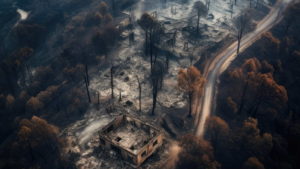
Furthermore in Conservation and the environment, Plants and trees are important parts of our surroundings and their presence will have a great influence.
They play a good role in environment protection by Preventing Erosion and Flooding. By using their root systems to hold the soil in place and absorb excess water, trees, and other plants help prevent erosion and flooding along the coast.
Preserving the Equilibrium of Ecosystems is also one of the important environment services.
The entire ecosystem is impacted when an animal goes extinct or becomes endangered. Plants and other creatures may be impacted by shifts in the food chain. For instance, a carnivorous predator keeps an animal population under control by preventing it from over-eating the local plant life.
Moreover, in ecosystems, even little insects like bees are essential. Many plants, including those that provide us with food, could not proliferate without them.
Mineral and fuel conservation is crucial for the environment protection also.
A large number of minerals and fuels are non-renewable, which means that when they run out, there won’t be any left for future generations.
Nonetheless, to cut a long story, to protect the environment, and guarantee the welfare of future generations, Actions of conservation are fundamental. We can cooperate to protect the environment for future generations by putting good conservation strategies into practice and working together.
Conservation and the environment are linked and efforts will make the world a better, safer, and sustainable place to live.













